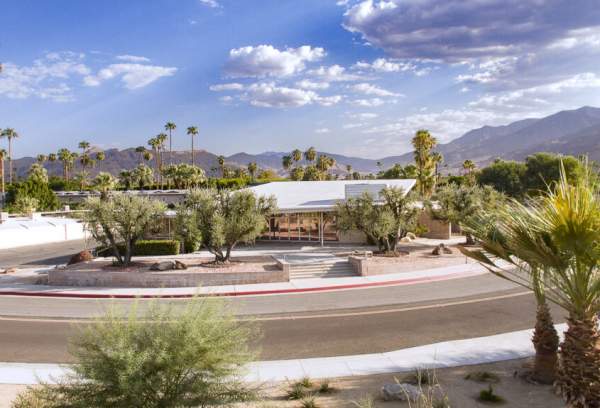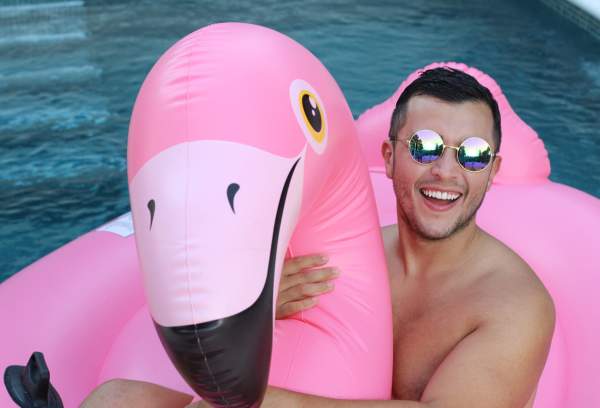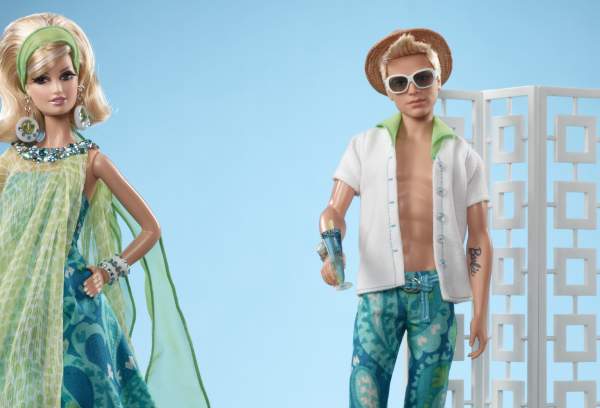Palm Springs has evolved into a vibrant oasis known for its rich history, beautiful landscapes, and captivating allure. Over the years, the city has cultivated a welcoming and inclusive atmosphere, with numerous LGBTQ+ events, accommodations, and establishments catering to all community aspects. From lively pool parties and pride festivals to a thriving nightlife scene and a strong sense of community, Palm Springs has earned its reputation as a beloved and popular gay-friendly getaway. But how did we get here?
A Hollywood Hideaway
Palm Springs’ journey as an LGBTQ+ destination dates back to the early 20th century. In the 1920s and 1930s, affluent individuals seeking refuge from the bustling cities flocked to Palm Springs. The studio system exerted tight control over actors' personal lives, including their public image and relationships.
Among the things that might go wrong included activities that the performer did away from the set outside the context of the movie production. These activities could affect the public perception of the revenue-generating performer. This created the necessity of a contractual provision known as the Morals Clause. It was initially designed to establish some boundaries around the behavior of performing artists. The clause enabled the studios to terminate a performer’s contract quickly if the clause was violated.
The Morals Clause might be the only provision allowing studios to rescind the contract, hence its initial importance. It adopted what was then considered deviant sex – homosexuality. It was not unusual for a studio to hire private detectives to follow stars and see if they were engaging in homosexual behavior.
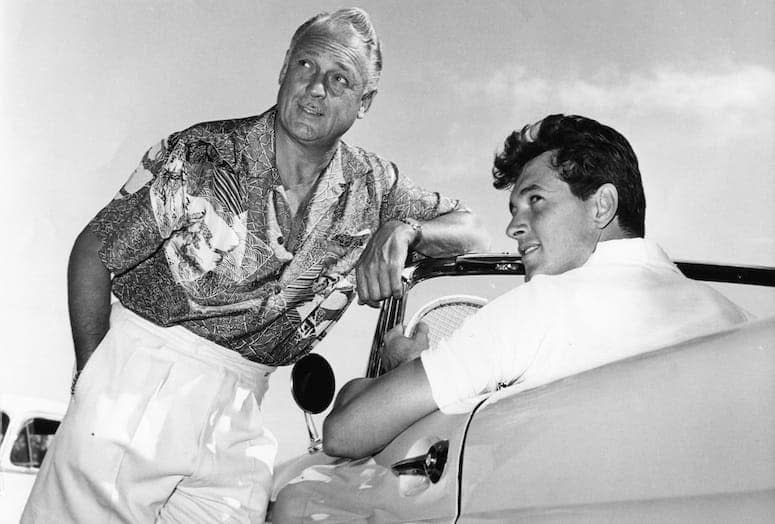
Rock Hudson and Mayor Charles Farrell. Credit: Palm Springs Historical Society.
Many Hollywood stars, especially those who identified as gay, faced pressure to hide their sexual orientation due to societal norms and the fear of career repercussions. Palm Springs offered these individuals a sanctuary away from the prying eyes and judging attitudes. The walls surrounding many of the homes and resorts provided privacy, yet Palm Springs was still close enough to the studios that a star could attend a movie or television production call in a couple of hours.
Greta Garbo
For Greta Garbo, this was a trailblazer’s hideaway. The Swedish actress, known for her fierce independence and mysterious persona, was one of the first Hollywood icons to establish a presence in Palm Springs during the 1930s. She found solace in the desert, which allowed her to escape the media's constant scrutiny and the studio system's expectations. She insisted on having the premier of her 1936 film, Camille, shown at the grand opening of the Plaza Theater downtown. She was MGM's biggest star. It was reported she stayed at the Ingleside Inn at the time. Other celebrities were Robert Taylor, Barbara Stanwyck, Tyrone Power, Ralph Bellamy, and famous singer Rudy Vallee.

George Cukor
Famously gay director of Camille, George Cukor, was also in attendance. He went on to win an Academy Award for Best Director for My Fair Lady. He was discreet but known to have parties at his home for closeted celebrities and other gay men he met. His friends included gay actor William Haines, costume designer Orry-Kelly, Cary Grant, Joan Crawford, Marlene Dietrich, and gay songwriter Cole Porter. He was directing Tallulah Bankhead in Tarnished Lady in 1931. He directed Cary Grant in Sylvia Scarlett in 1935 and Holiday in 1938.
Greta Garbo, Marlene Dietrich, Tallulah Bankhead, and Janet Gaynor were part of an underground lesbian, or at least bisexual, element in Hollywood society.
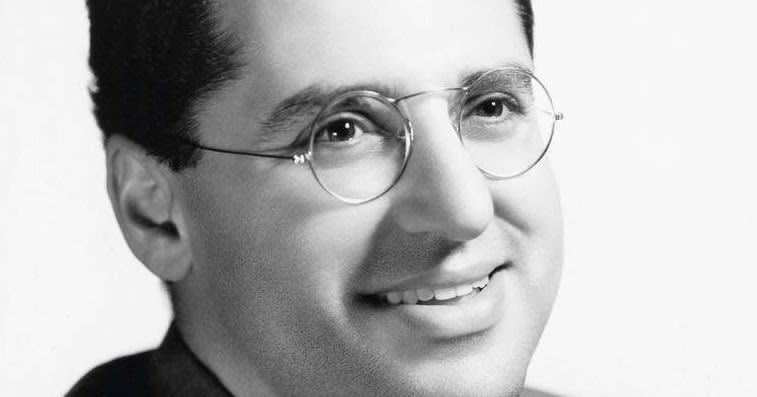
William Haines
William Haines, a prominent Hollywood actor from the 1920s and 1930s, has a significant connection to Palm Springs. He starred in more than 50 movies. Haines, known for his charismatic on-screen presence and his pioneering role as an openly gay actor during a time of societal intolerance, developed a deep love for Palm Springs. After he was fired from the studio for being gay, he and his partner opened an interior design business. Clients included Joan Crawford, Gloria Swanson, Carole Lombard, Rosalind Russell, Constance Bennett, Marion Davies, Lucille Ball, Ann Rutherford, Jack Benny and George Cukor. As his ultra-stylish crowd regularly traveled to Palm Springs, so did Haines.
In 1960, he redesigned and redecorated the home of Mrs. Irving Florsheim (of the shoe fortune) at 688 East Vereda Sur. It was so well received that it was opened for home tours and considered one of the most modern homes in Palm Springs.

The Rise of LGBTQ+ Visibility
While Palm Springs didn't yet have overtly "gay" spaces or bars in this early period, its reputation as a refuge for the LGBTQ+ community was growing. This foundation paved the way for Palm Springs to become a celebrated LGBTQ+ destination later, with more openly gay spaces emerging after World War II and well into the 1950s and 1960s.
Liberace
Liberace, the flamboyant and talented pianist, became synonymous with Palm Springs’ gay heyday. His friends called him Lee, and he lived in Palm Springs for 25 years until his death in 1987. Liberace’s opulent Palm Springs estate, known as “Casa de Liberace,” was a grand reflection of his extravagant personality. It was kitty-corner from Our Lady of Solitude church, which would later have his funeral service. Lee regularly entertained guests and threw lavish parties, solidifying Palm Springs as a haven for those who celebrated artistic expression and flamboyance.
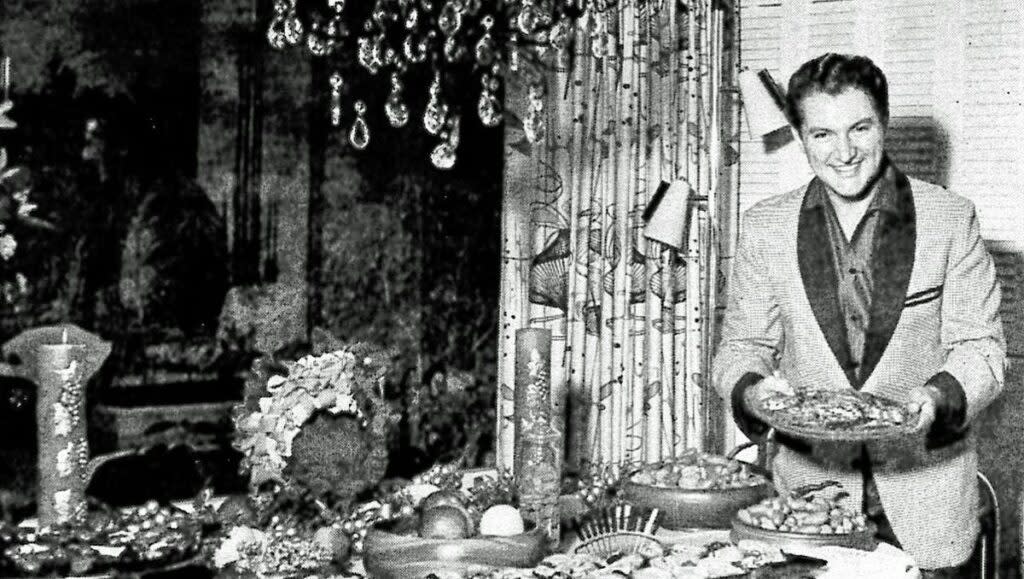
Liberace - Thanksgiving in Palm Springs - 1958
Arthur Elrod
Arthur Elrod, a prominent interior designer in Palm Springs, was gay. Elrod was a significant figure in midcentury modern design. He was known for his innovative use of space, bold colors, and blending of indoor and outdoor elements, which became a hallmark of the Palm Springs aesthetic.
Elrod's most famous work includes designing interiors for celebrities and influential clients. Still, he is perhaps best known for designing the iconic Elrod House in Palm Springs, built by architect John Lautner in 1968. With its dramatic concrete dome and panoramic views of the desert, this home was featured in the James Bond film Diamonds Are Forever.

Elrod lived openly as a gay man during a time when being gay was still often stigmatized, especially in public and professional spheres. He was respected for his talent and visionary designs, contributing to the stylish and modern look that Palm Springs became famous for. Elrod's impact on the city's design culture was significant, helping to solidify Palm Springs as a center of modernist design.
Rock Hudson
After establishing himself as a Hollywood heartthrob, Rock Hudson began coming to Palm Springs in the early 1950s. The studio forced him into a very public arranged marriage to Phyllis Gates, who worked as a secretary for influential Hollywood agent Henry Willson, who represented Hudson. He knew the importance of not violating the Morals Clause. Henry Willson was also gay and represented Tab Hunter, Troy Donohue, and Robert Wagner. Most fans remember him in movies like Pillow Talk, the first of several successful films he co-starred with Doris Day. Later, it would be the TV series McMillan and Wife from 1971 to 1977, co-starring with Susan Saint James.
He found solace in getting away to Palm Springs, which offered a more tolerant atmosphere while keeping his homosexuality hidden from the public eye. In Palm Springs, Rock and his lover, George Nader, could carry on without fear of being outed. Nadar was good friends with Rock's secretary, Mark Miller. He was also an actor for Universal and won a Golden Globe in 1954 as the most promising newcomer.

Rock Hudson's personal life became a subject of public discussion in the 1980s when he was diagnosed with AIDS, becoming one of the first major celebrities to bring widespread attention to the AIDS crisis. His diagnosis and subsequent death in 1985 played a pivotal role in changing the public perception of both the disease and the LGBTQ+ community.
Desert Aids Project (now known as DAP Health)
Founded in 1984, the Desert AIDS Project was established to provide healthcare, support services, and advocacy for people living with HIV and AIDS in the Coachella Valley. Hudson's public acknowledgment of his AIDS diagnosis brought global attention to the epidemic and helped reduce some of the stigma surrounding the disease. His courage and subsequent media coverage led to increased funding and support for AIDS-related causes, including the Desert AIDS Project.
DAP Health continues to provide critical services to the community and has grown into one of the largest and most respected HIV/AIDS organizations in the U.S.
Cary Grant
In 1954, Cary Grant and his third wife, Betsy Drake, purchased a 6-bedroom home known as Las Palomas in the Movie Colony. He owned the house until 1972. Cary's sexual orientation was a subject of conversation and controversy. The speculation was first fueled by the fact Cary shared an apartment in New York with John Orry-Kelly in 1931, who was gay. John would become famous as one of Hollywood's most prolific costume designers. Then, in 1932, he met Randolph Scott on the set at Paramount. They soon moved in together. To many of their contemporaries in the film business, there was little doubt that Grant and Scott were a couple.

Randolph Scott, wife Pat, and PR man Tony Burk at Silver Spur Ranch. Credit Palm Springs Historical Society.
Note that the hero image at the top is Cary Grant (right) and Randolph Scott (left). The Cary Grant estate is next to Desert Regional Hospital by Ruth Hady Park. Randolph purchased a home in Silver Spur Ranch in 1957, next to Thunderbird Heights in Palm Desert. All this added to the allure of Palm Springs, where Cary and Randolph's lifelong relationship continued to play out.
Palm Springs LGBTQ+ History - Getting Organized
Through the 1970s, the Palm Springs gay community was not organized and still didn’t realize its potential. The Desert Business Association (DBA), founded in 1979 as a networking group of bar and hotel owners, began to assert itself politically. Greater Palm Springs Pride, which started as a song and dance revue called “Sizzle” at the Riviera Hotel in 1986, soon made plans to march in the streets. In addition, a small group of friends simply looking out for each other officially formed the Desert AIDS Project in 1984. It was at a time when public agencies and the healthcare system were slow to respond to the virus in the Coachella Valley.
The late Dick Haskamp opened the first neighborhood gay bar in 1991, Streetbar. It was the only gay business on Arenas Road at the time. Most of the storefronts were vacant. But that didn’t last. By 2000, Arenas was full. If you ever wonder whether a neighborhood bar can affect an entire city, Streetbar would prove the case. You can still see a line of people out the door waiting for a seat.
Clothing Optional Resorts & Warm Sands
Palm Springs offers an array of clothing options for gay men’s resorts. These boutique inns provide spaces where individuals can embrace their authentic selves and enjoy a liberated environment. These resorts play a significant role in attracting LGBTQ+ travelers seeking a place free from judgment and full of acceptance.
Initially, the city leaders weren't so fond of this, so at first, they encouraged the gay community to open its resorts in Cathedral City. The most popular one was behind Target, now called the Paloma Resort. But after Palm Springs went through a marked decline in the 70s, it slowly warmed up to the idea, especially as gay men brought money to renovate and revitalize a deteriorating neighborhood, Warm Sands, and create a gay resort town within a town.
El Mirasol Villas, opened in 1976, is believed to be Palm Springs’ first gay resort. Close by is the Vista Grande, the first clothing-optional gay resort, which opened in 1984.

By the 1970s, Warm Sands had fully established itself as the epicenter of Palm Springs’ gay resort scene. Dozens of clothing-optional resorts opened, offering an increasingly open and welcoming atmosphere as societal attitudes toward LGBTQ+ individuals began to shift.
In 1989, Matt Robinson and Kevin Rice opened Triangle Inn, a clothing-optional resort for men.
List of Current Gay Men's Resorts.
First Gay Bar
In 1993, the Tool Shed, the original Levi, leather, fetish gear bar, opened on Sunny Dunes.
Palm Springs LGBTQ+ History - The Renaissance
The city began to fill up with gay and lesbian visitors in the 1990s. Events like the White Party and Club Skirts Dinah Shore Weekend brought even more gay tourists. Soon, these tourists discovered a virtual treasure trove of nearly untouched, inexpensive, sometimes abandoned architectural gems from the 50s and 60s. The nostalgia for midcentury anything was booming, and without making too much out of a stereotype, gay men with design sense and money flocked here to remodel to their hearts’ content.
Palm Springs has acquired an urban sophistication you cannot find anywhere else. This has led to an explosion in the arts, design, fine dining, and high-end hotels that appeal to young, hip urbanites.
High walls and ficus hedges still sequester many homes and resorts in Palm Springs, but gay people are not hidden anymore. They have become a defining part of the larger, diverse desert community.
Greater Palm Springs Pride
In June 1986, a modest soiree at the Riviera ballroom comprised Pride. Local performers basked in the glow of a dinner party atmosphere, but it would be six more years before the revelry spilled into the streets.
In 1989, Pride featured a Friday reception at the Desert Fashion Plaza, a Saturday performance by Eartha Kitt, and a Sunday Country Fair hosted by the Desert Women's Association.
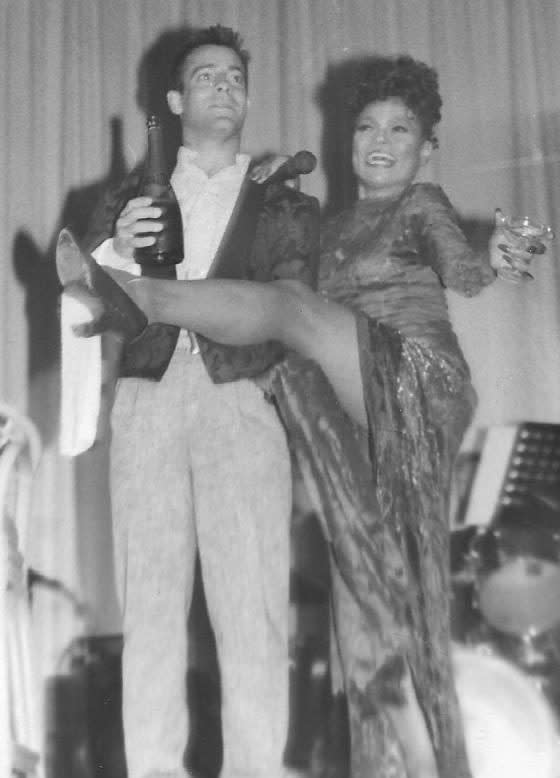
Eartha Kitt Entertaining at 1989 Pride
The Palm Springs Pride Parade moved to Williams Road in 1992. In 1995, Pride moved from Memorial Day weekend to Veterans Day Weekend, spiking attendance. It then moved downtown to Ramon Road in 1996 and incorporated a festival on Arenas Road. Having a downtown gay business district gave Pride a focus in the downtown area. The following year it moved to Palm Canyon Drive.
Today, Greater Palm Springs Pride is in November and welcomes over 100,000 attendees. The gay district is officially called Arenas District.
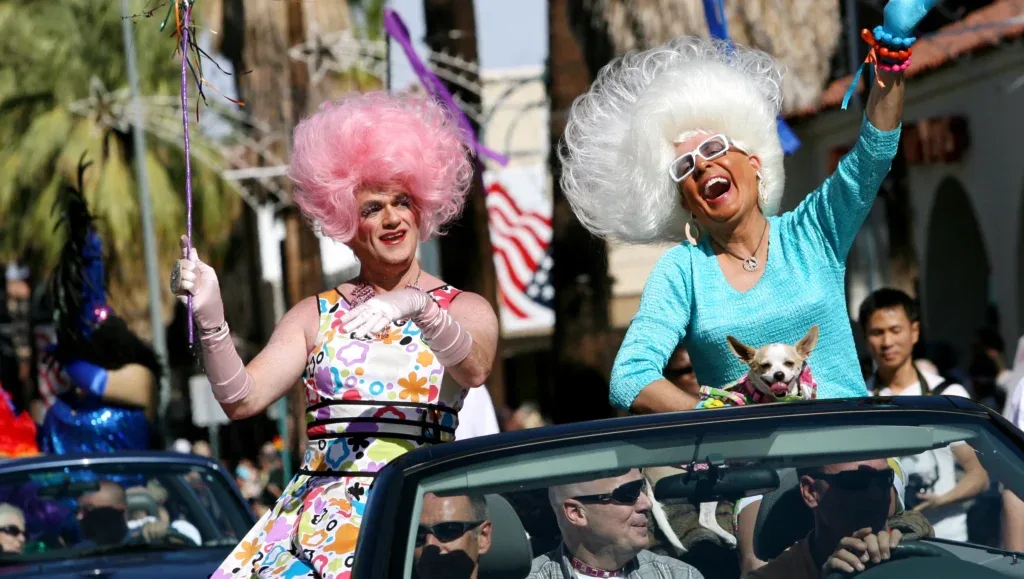
Palm Springs Gay Men's Chorus
In 1998, the Gay Men’s Chorus of Los Angeles presented their holiday concert in Palm Springs. After that performance, residents banded together and formed a singing group called the Caballeros, the Gay Men’s Chorus of Palm Springs.
White Party Palm Springs
White Party began in 1989 as a semi-intimate gay dance party at the Marquis Villas Resort, now Hotel Zoso. It was attended by 500 of producer Jeffery Sanker's friends and blossomed into a 4-day festival. It's now called White Party Global and is the largest gay dance party in the U.S., attracting thousands from around the globe. (Event paused for 2025)
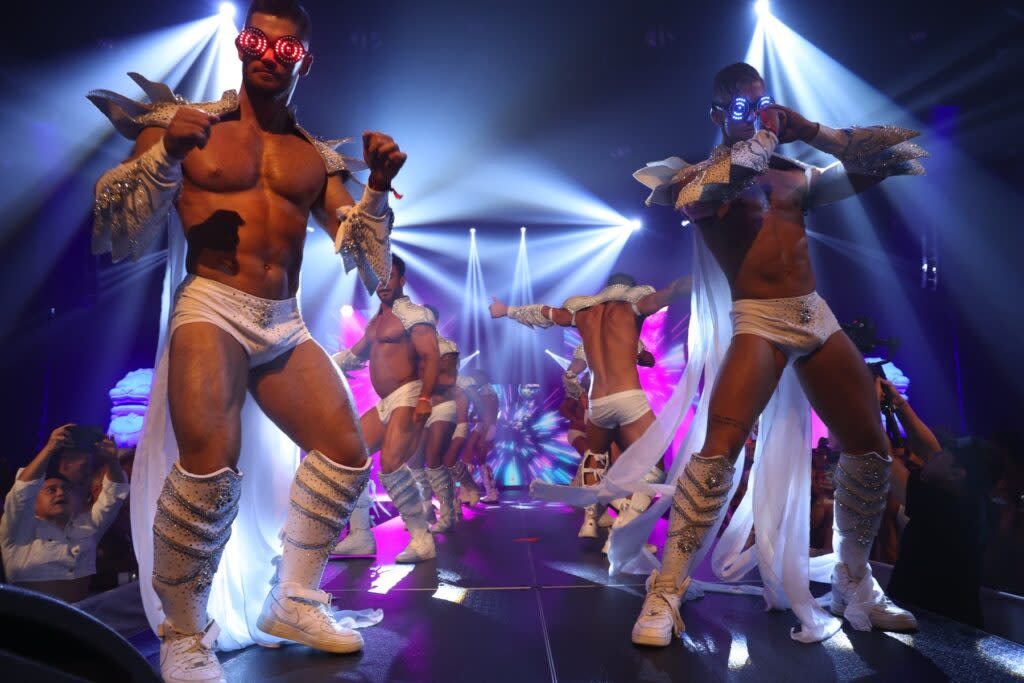
The Dinah Palm Springs
Under the Club Skirts marquis, Mariah Hanson created the world-famous Dinah Shore Weekend in 1991. It was called the Dinah Shore Weekend because it took place at the same time as the Dinah Shore Golf Tournament. The intention was to create an exciting, community-building, life-affirming, unimaginably stellar experience for her customers. She chose the Palm Springs Art Museum to host her first Dinah. It sold out.
Mariah wants The Dinah goers to feel safe and inclusive, so she now books entire hotels so that they are 100% lesbian-occupied. This creates an empowering lesbian world within the city. Today, The Dinah, which takes place in September, is considered the largest lesbian/queer women event in the world.

Cinema Divers Film Festival
Cinema Divers, the Palm Springs LGBTQ+ film festival, launched in 2007.
Palm Springs Celebrates Pride Throughout The Year
Arenas District Guide
Just Fabulous
From Sacred Space to Center Stage
- 8 min read
Transforming Frey’s Desert Gem into Dezart Performs Playhouse…
The Plaza Theatre: A Star Returns to the Spotlight
- 12 min read
Built in the striking early Spanish-style architecture, The Plaza…
Guide to Gay Resorts in Palm Springs
- 5 min read
Looking for the best gay resorts in Palm Springs? Whether you're…
La Plaza: The Heart of Historic Palm Springs
- 8 min read
The Vision of Julia Carnell Julia Carnell, a philanthropist and…
Growing Up Mattel- A Palm Springs Toy Story
- 11 min read
Mink stoles and martinis. A 6-year-old with Unlimited Toys. Add Mattel…
